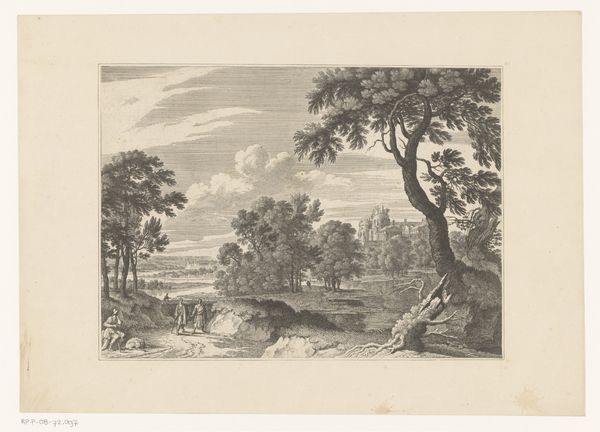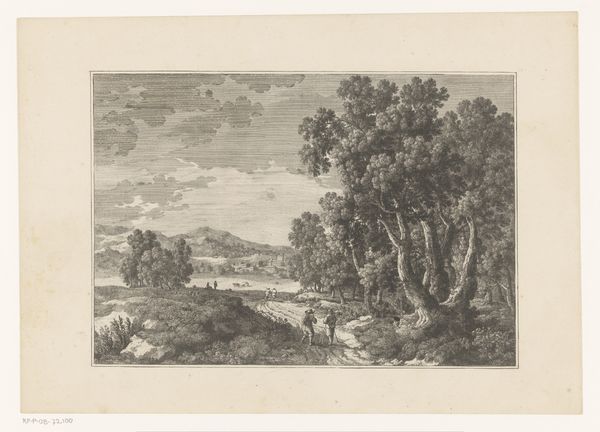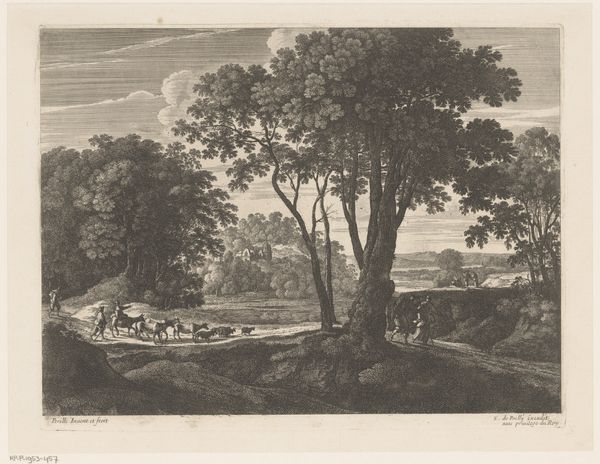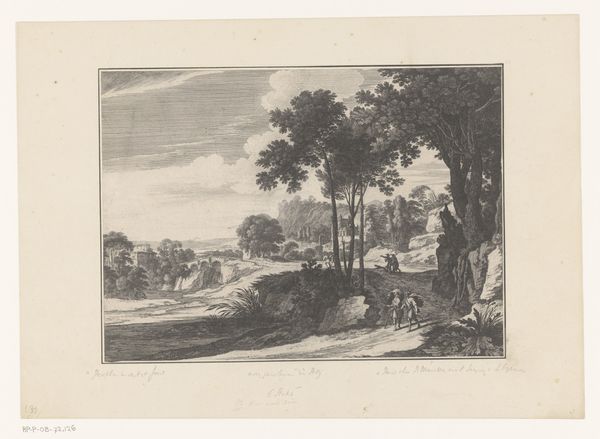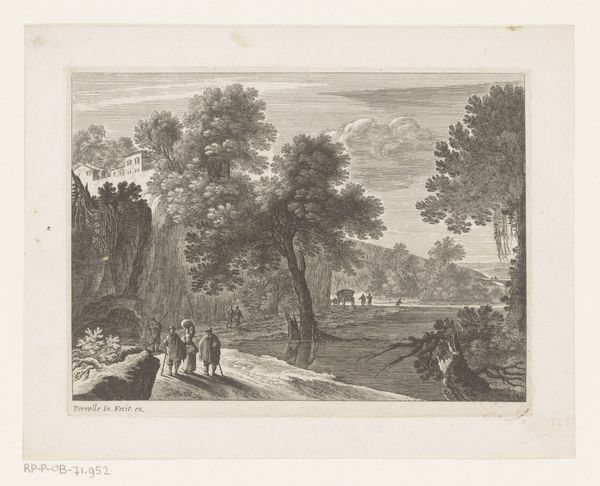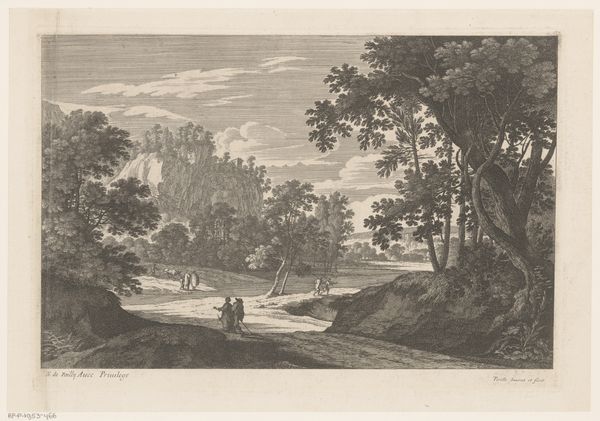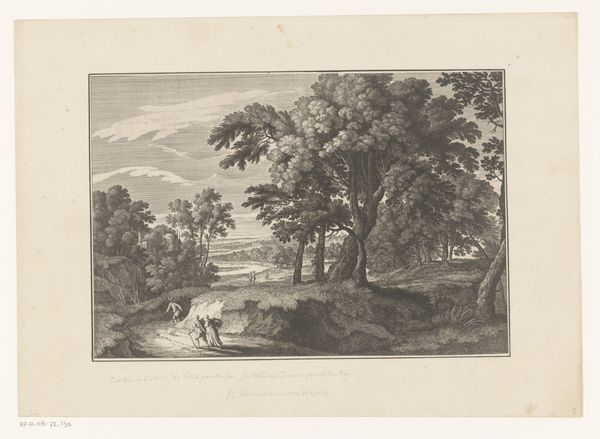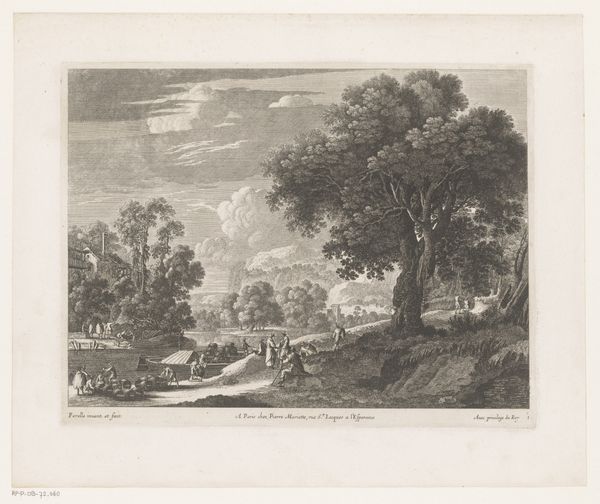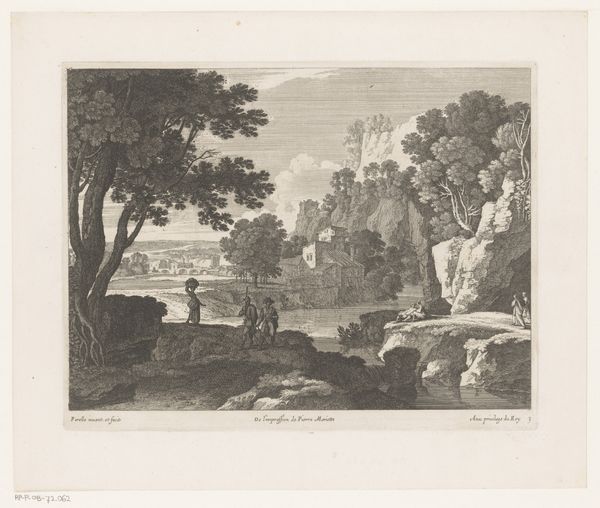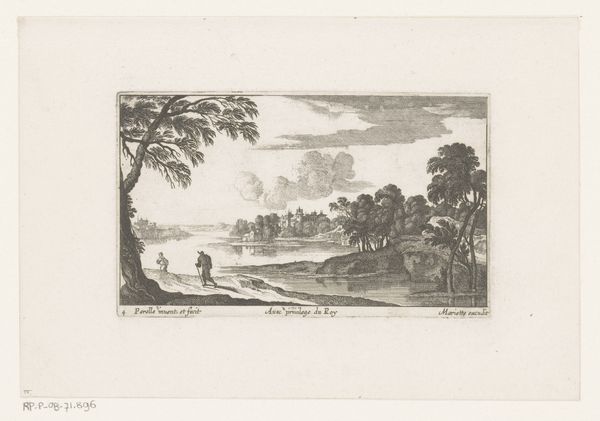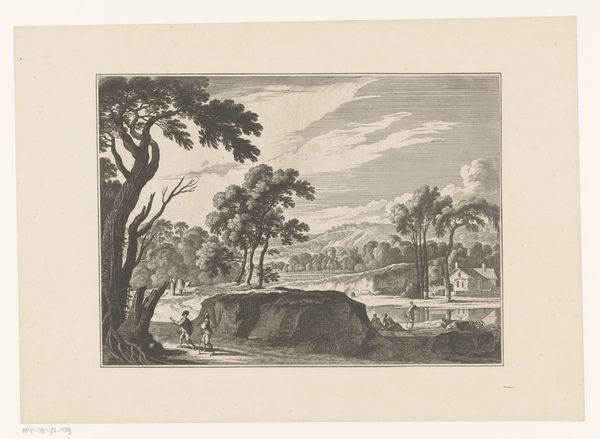
print, etching
#
baroque
#
natural tone
# print
#
etching
#
light coloured
#
old engraving style
#
landscape
#
line
Dimensions: height 240 mm, width 315 mm
Copyright: Rijks Museum: Open Domain
Curator: This is "Herders en ruiter bij een brug", which translates to "Herdsmen and Rider by a Bridge", an etching by Nicolas Perelle dating from the late 17th century. Editor: It has an incredible level of detail and this sepia tone that feels antiquated but in a comforting way. The eye is immediately drawn to the bridge with the figures crossing it. Curator: Absolutely. Perelle, working within the Baroque landscape tradition, depicts not just a scene, but a hierarchy. Consider the equestrian figure – clearly of higher status, emphasized through elevated positioning. What stories does that raise about land, labour, and the structuring of 17th-century life? Editor: Yes, it prompts a very necessary discussion about production, ownership, and circulation. Think of the sheep being herded. What raw materials are being gathered here, for what purposes, and to whose benefit? This print, as a commodity itself, would then have circulated amongst a particular class. Curator: The very act of creating the print reflects socio-economic relations of the time. The labour invested in etching these delicate lines – consider it in dialogue with the backbreaking labour of those tending livestock. Editor: Exactly, and the means by which this image gets replicated. How it participates in broader systems of consumption. But the rendering itself—notice the artist’s use of light. The tree to the left seems almost oppressive, towering over the composition and emphasizing the landscape's resources. Curator: I read that darkness in the foreground differently. The forest itself can signify the unknown, even that which is ungoverned or resistant. It’s that contrast—the 'natural' world framing constructed hierarchies that makes this more than just a pretty picture. Editor: I think your approach illuminates the intersectional implications behind every layer of the piece. Looking at it, the material conditions, production methods, consumption patterns... They speak volumes about the Baroque era and frankly, a good deal more even today. Curator: Hopefully, listeners can continue considering its cultural impacts through an engagement with history. Editor: Or by reflecting on what is included, what is intentionally elided and omitted. Either approach I think will yield profound discoveries about the work and the culture it reflects.
Comments
No comments
Be the first to comment and join the conversation on the ultimate creative platform.
